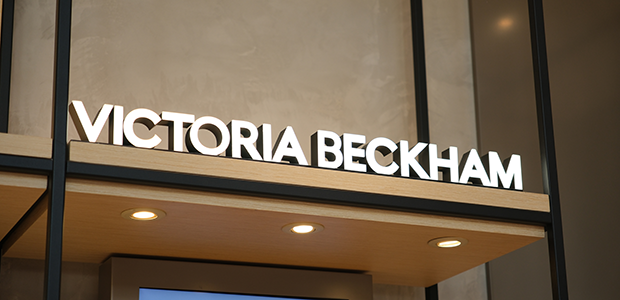
What Victoria Beckham's docuseries teaches startups about money
Victoria Beckham's recent Netflix documentary offered an unexpectedly candid look at the financial realities of building her luxury fashion brand. The documentary revealed that Victoria Beckham Limited had been operating "millions of pounds in the red" despite significant investment from David Beckham.
There were some eyebrow-raising spending details – like £70,000 a year on office plants which, as an accountant, physically gave me the shudders.
I wasn't expecting a celebrity fashion documentary to be a practical case study in startup financial management. But strip away the luxury context, and what's left are financial patterns that apply to startups everywhere.
Here's what founders can take away from Victoria's experience.
Make profit a priority, not an afterthought
Victoria's fashion brand operated at significant losses for years despite having access to David Beckham's wealth. The takeaway? Even with deep pockets backing you, your business needs to eventually make money to survive.
You've probably heard that early losses are just part of the startup journey. And sometimes that's true – certain business models genuinely require time and scale before they can turn profitable. But there's a difference between strategic investment in future profitability and a business model that simply doesn't work.
Having access to funding – whether from investors, personal wealth, or other income sources – can make it easier to accept losses as normal. When you can keep the lights on regardless of whether the numbers add up, you stop asking the hard questions and keep telling yourself that profitability is just around the corner.
Sometimes, the question you need to ask isn't "can we access more funding?" but "what specifically needs to change for this business to sustain itself?" If the answer keeps shifting or the timeline keeps extending, that's your warning sign.
Question every nice-to-have
Fifteen different linings for a single coat design. Furniture flown across continents. And yes, £70,000 annually on office plants – with an additional £15,000 for someone to water them. My first thought was: where was the financial oversight?
Victoria's examples might sound extreme, but look past the luxury price tags, and you'll find a pattern that's surprisingly common across startups of all sizes. Costs creep up slowly, one decision at a time, until you're spending far more than necessary.
Individual upgrades can quickly balloon into a cost structure that eats through your runway and profitability. And once spending patterns are established, they're surprisingly hard to reverse because they start feeling like necessities rather than choices.
The challenge is distinguishing between costs that drive revenue and non-essential spending that simply makes operations more comfortable or polished. Periodically audit your spending and ask: is this directly contributing to growth, or is it just a nice-to-have?
A strong brand still needs strong finances
From the outside, Victoria Beckham's brand looked successful. High-profile fashion shows, celebrity clients, extensive media coverage. From the outside, the brand looked like a success story. The financial reality was different.
You can have impeccable branding, a strong market presence, and positive customer perception whilst simultaneously losing money. The two things aren't connected the way many founders assume. Brand strength doesn't automatically translate to financial health.
And here's the tricky part: sometimes you do need to invest in perception to win customers, partners, or investors. Strategic brand-building has genuine value – the challenge is knowing how much to invest before you have the revenue to support it.
You need to know when brand investment crosses the line into spending you can't afford. External perception matters, but it can't replace actual revenue and sustainable unit economics. One pays the bills; the other opens doors. You need both, in the right balance.
Find people who'll tell you the truth
"People were afraid to tell me the truth," Victoria admitted. When you're the founder – especially one with a strong vision and personality – it becomes easy for everyone around you to nod in agreement. Team members or advisors around you don't want to seem negative or risk damaging the relationship.
If no one's questioning your decisions, you're probably not getting the full picture. You need people who will tell you when spending is excessive, when the numbers don't add up, when you're heading in the wrong direction.
The best thing you can do as a founder is make it explicitly safe for people to disagree with you. Because the people willing to tell you uncomfortable truths are often the ones who'll save you from expensive mistakes.
Build growth that sustains itself
Victoria's brand grew with impressive double-digit revenue increases, major fashion shows, and a team of over 100 people. But this growth was funded through ongoing shareholder investment, not operational cash flow.
So, when does that growth start paying for itself?
Sometimes upfront investment makes sense. Some businesses need to reach a certain scale before unit economics work. Others need to move fast to capture market opportunity. Having investors who don't expect quick returns can be a genuine competitive advantage.
But ask yourself: is this investment enabling future profitability, or is it delaying the realisation that you’re scaling a broken model? Growth that continuously requires external funding isn't sustainable – it's creating a dependency that could disappear overnight.
What founders can take away
Luxury fashion operates differently to most startups and Victoria obviously had access to resources most founders don't. But the core lessons about profitability, cost management, honest feedback, and sustainable growth apply universally. These fundamentals matter - whether you're burning through venture capital or bootstrapping from personal savings.
The founders who succeed long-term aren't necessarily the ones who never make financial mistakes. They're the ones who spot problems early, adapt quickly, and don't ignore the financial reality.

